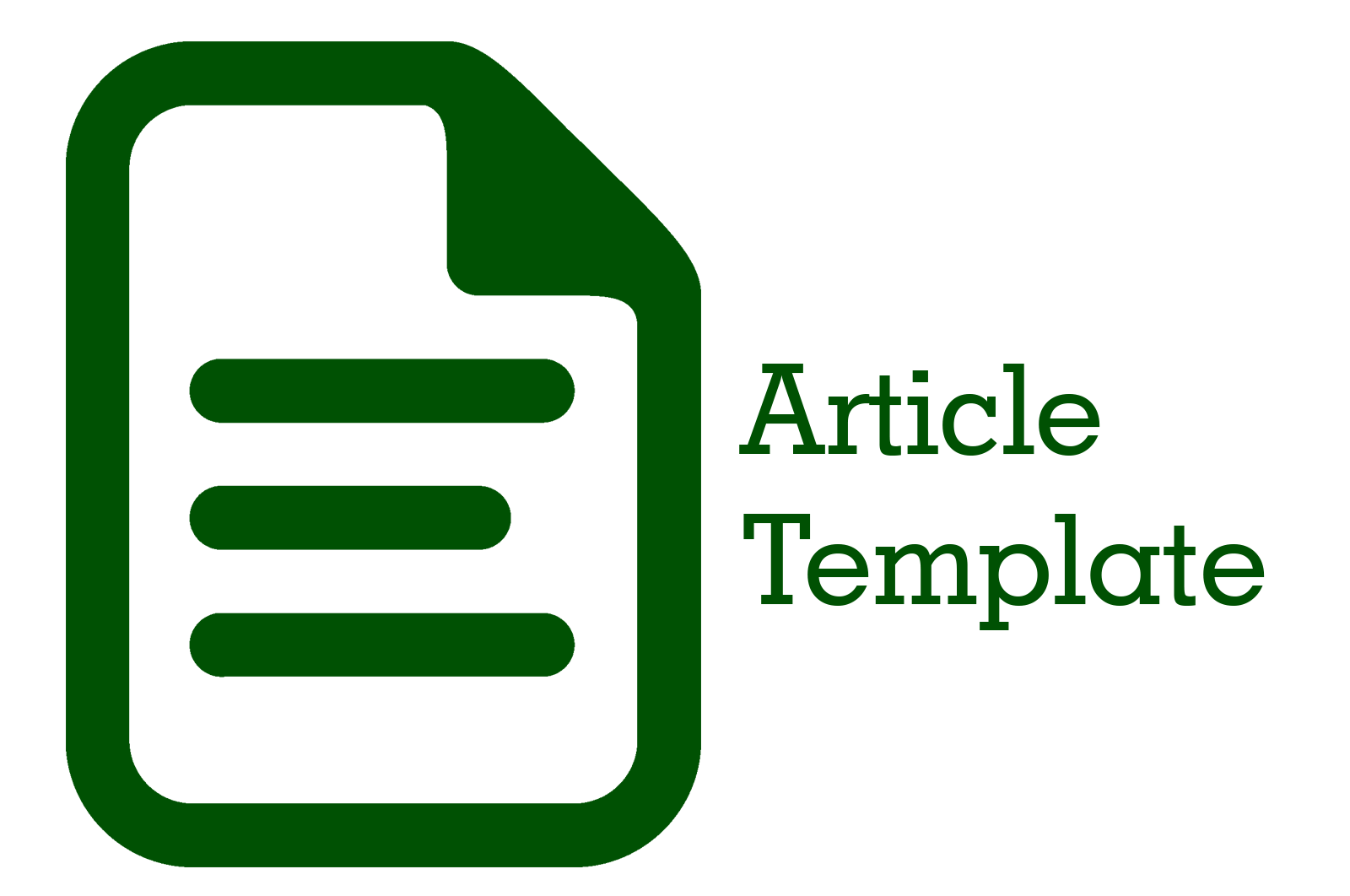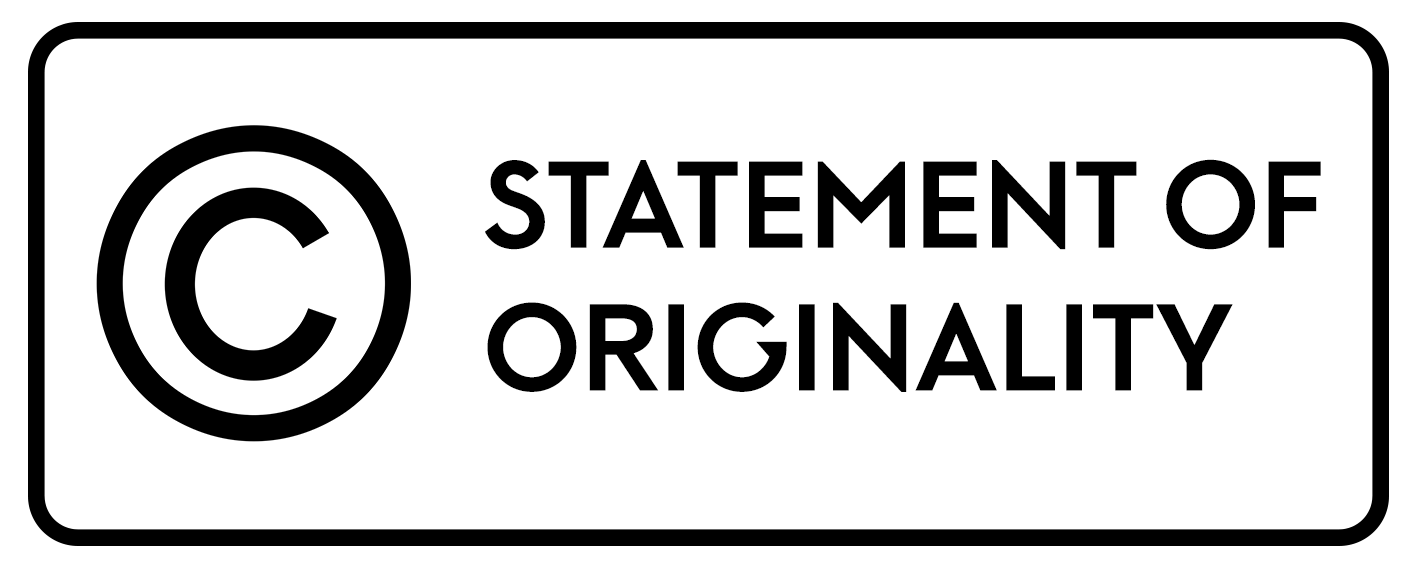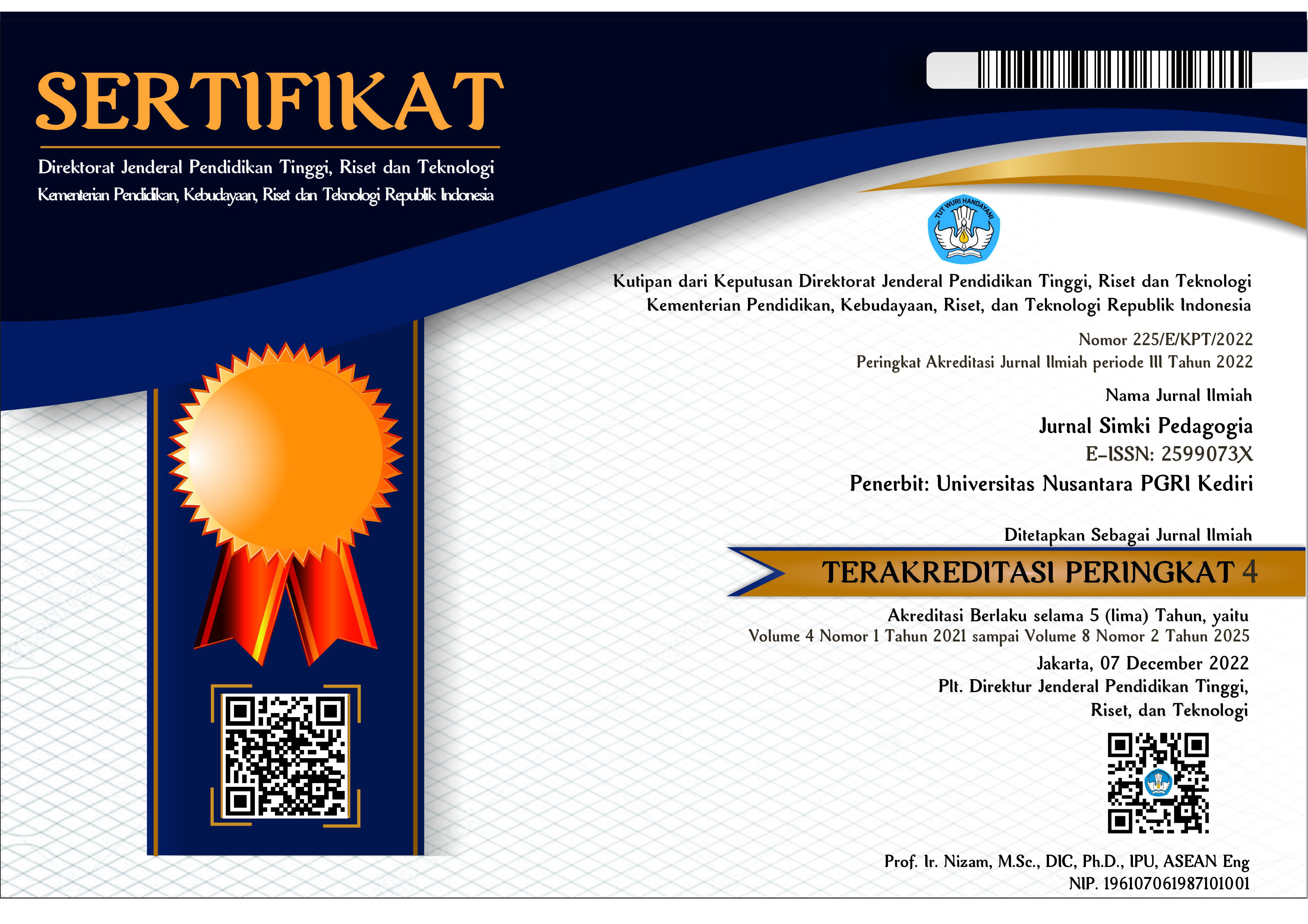Penggunaan Kartu Blocks Pallete Terintegrasi Game Scratch untuk Memperkenalkan Konsep Pemrograman Secara Visual dan Interaktif pada Mata Pelajaran Informatika Kelas X Akuntansi 3
 Abstract views: 177
,
Abstract views: 177
,
 PDF (Bahasa Indonesia) downloads: 83
PDF (Bahasa Indonesia) downloads: 83
Abstract
The lack of basic programming comprehension among non-ICT vocational students, particularly in Accounting majors, presents a significant challenge in Informatics education. Most students have not been systematically introduced to programming logic at the junior high school level, resulting in difficulties understanding key concepts such as variables, conditionals, and loops. This study aims to introduce fundamental programming concepts visually and interactively to Grade X Accounting 3 students through the use of Blocks Palette cards within a Project-Based Learning (PjBL) framework. Employing a descriptive qualitative method, data were collected through observations, interviews, surveys, and documentation of student project outcomes. The research subjects consisted of 36 students from a vocational high school. The findings revealed that the use of Blocks Palette cards significantly enhanced students' understanding of programming logic. Prior to the intervention, only 16.7% of students had any exposure to programming, but post-intervention, 83% were able to grasp programming logic sequentially. Moreover, students demonstrated increased motivation and a reduction in errors when arranging Scratch blocks. The integration of card-based media within the PjBL approach proved effective in fostering active, collaborative, and contextual learning environments, in line with Dual Coding Theory and constructivist principles. Therefore, this approach not only improved theoretical understanding but also strengthened practical skills, creativity, and students’ learning motivation.
Downloads
References
Amaliah, I., & Sudihartinih, E. (2019). Pengembangan Bahan Ajar Konsep Pecahan Berbantuan Multimedia Untuk Meningkatkan Kemampuan Pemahaman Matematis Siswa Di Sekolah Inklusi. Jurnal Pendidikan, 4(2), 6–10. https://journal.unesa.ac.id/index.php/jp/article/view/5163
Anggraini, P. D., & Wulandari, S. S. (2020). Analisis Penggunaan Model Pembelajaran Project Based Learning Dalam Peningkatan Keaktifan Siswa. Jurnal Pendidikan Administrasi Perkantoran (JPAP), 9(2), 292–299. https://doi.org/10.26740/jpap.v9n2.p292-299
Anwar, K., & Jurotun, J. (2019). Peningkatan Aktivitas dan Hasil Belajar Siswa SMA Pada Dimensi Tiga Melalui Model Pembelajaran PBL Berbantuan Alat Peraga. Kreano, Jurnal Matematika Kreatif-Inovatif, 10(1), 94–104. https://doi.org/10.15294/kreano.v10i1.19366
Cho, Y., & Lee, Y. (2017). Possibility of improving computational thinking through activity based learning strategy for young children. Journal of Theoretical and Applied Information Technology, 95(18), 4385–4393.
Clark, J. M., & Paivio, A. (1991). Dual coding theory and education. Educational Psychology Review, 3(3), 149–210. https://doi.org/10.1007/BF01320076
Dewi, N. N. S. K., Arnyana, I. B. P., & Margunayasa, I. G. (2023). Project Based Learning Berbasis STEM: Meningkatkan Kemampuan Berpikir Kritis dan Hasil Belajar Siswa. Jurnal Ilmiah Pendidikan Profesi Guru, 6(1), 133–143. https://doi.org/10.23887/jippg.v6i1.59857
D. J. Malan and H. H. Leitner, “Scratch for budding computer scientists,” SIGCSE 2007
th SIGCSE Tech. Symp. Comput. Sci. Educ., vol. 39, no. 1, pp. 223–227, 2007,
https://doi.org/10.1145/1227310.1227388.
Fadiyah Andirasdini, I., & Fuadiyah, S. (2024). Pengaruh Model Pembelajaran Problem Baseed Learning Terhadap Keterampilan Berpikir Kreatif Peserta Didik Pada Pembelajaran Biologi : Literature Review. Biodik, 10(2), 156–161. https://doi.org/10.22437/biodik.v10i2.33827
Firmadani, F. (2020). Media Pembelajaran Berbasis Teknologi Sebagai Inovasi Pembelajaran Era Revolusi Industri 4.0. Prosiding Konferensi Pendidikan Nasional, 2(1), 93–97. http://ejurnal.mercubuana-yogya.ac.id/index.php/Prosiding_KoPeN/article/view/1084/660
Hanafi, I. (2013). Re-orientasi keterampilan kerja lulusan pendidikan kejuruan. Jurnal Pendidikan Vokasi, 2(1), 107–116. https://doi.org/10.21831/jpv.v2i1.1021
Hardiansyah dkk. 2023. Implementasi Aplikasi Game Menggunakan Scratch dalam Meningkatkan Hasil Belajar dan Motivasi Belajar Siswa. Jurnal Pengabdian Kepada Masyarakat (Online). Vol. 3 No. 4. https://doi.org/10.53625/jabdi.v3i4.6464
Hayati, W. I., Utaya, S., & Astina, K. (2016). Efektivitas Student Worksheet Berbasis Project Based Learning Dalam Menumbuhkan Kemampuan Berpikir Kritis Siswa Pada Mata Pelajaran Geografi. Jurnal Pendidikan: Teori, Penelitian, Dan Pengembangan, 1(3), 468–474. http://dx.doi.org/10.17977/jp.v1i3.6174
Huda I. 2020. Perkembangan Teknologi Informasi dan Komunikasi (TIK) Terhadap Kualitas Pembelajaran di Sekolah Dasar. Jurnal Pendidikan dan Konseling (Online). Vol. 2 No. 1 PP. 121-121. https://doi.org/10.31004/jpdk.v2i1.622
Lubis, R. ., Nabila, P. ., Nasution, N. I. ., Azzahra, L. ., Hasraful, H., & Andina, F. (2024). Evolusi Remaja Usia 17-19 Tahun: Analisis Pertumbuhan Dan Perkembangannya. Jurnal Review Pendidikan Dan Pengajaran, 7(3), 7899–7906. https://doi.org/10.31004/jrpp.v7i3.29960
N. Basuki, 2011. Pengembangan Media Pembelajaran Interaktif Untuk Meningkatkan Hasil Belajar Mahasiswa Pada Matakuliah Menggambar Teknik. PEDIKA (Jurnal Pendidik. Vokasi), pp. 1–16. https://jurnal.unimed.ac.id/2012/index.php/JPTM/article/view/7735
Pajriah, S., & Budiman, A. (2017). Pengaruh Penerapan Model Pembelajaran Dual Coding Terhadap Peningkatan Hasil Belajar Siswa Pada Mata Pelajaran Sejarah (Studi Penelitian Kuasi Eksperimen pada Siswa Kelas XI di SMA Informatika Ciamis). Jurnal Artefak, 4(1), 77. https://doi.org/10.25157/ja.v4i1.737
Raibowo, S., Nopiyanto, Y. E., & Muna, M. K. (2019). Pemahaman Guru PJOK Tentang Standar Kompetensi Profesional. Journal Of Sport Education (JOPE), 2(1), 10. https://doi.org/10.31258/jope.2.1.10-15
Rohandi M. dkk. 2023. Iktisar Strategi Pembelajaran Pemrograman: Sebuah Integrative Review. Journal of Information Technology Education (Online). Vol 3 No. 2. https://doi.org/10.37905/inverted.v3i2.21207
Shalikhah, Norma Dewi, D. (2017). Media Pembelajaran Interaktif Lectora Inspire Sebagai Inovasi Pembelajaran. Warta LPM, 20(1), 9–16. https://doi.org/10.23917/warta.v19i3.2842
Suppiah Nachiappan. (2013). Peranan Teori Dual Coding dan Proses Kognisi dalam Pedagogi Hermeneutik. Jurnal Pendidikan Bitara 6, 6, 1–15. https://myjurnal.mohe.gov.my/public/article-view.php?id=89488
Sutadji, E., Kejuruan, P., & Malang, P. N. (2016). Pengembangan Employability Skills Siswa Pendekatan Saintifik. Jurnal Pendidikan, 1(7), 1391–1398. http://dx.doi.org/10.17977/jp.v1i7.6582
Wilkins, Stephen. (2001). Human Resource Development through Vocational Education in the United Arab Emirates: the case of Dubai Polytechnic. Journal of Vocational and Technical Education and Training. Vol. 54 Number 1. http://dx.doi.org/10.1080/13636820100200190
Copyright (c) 2025 Deta Dyan Widyaskumara, Devi Maha Perdana, Dewi Indah Sekartadji, Endah Puji Rohmawati

This work is licensed under a Creative Commons Attribution 4.0 International License.

Jurnal Simki Pedagogia : https://jiped.org/index.php/JSP/index is licensed under a Creative Commons Attribution 4.0 International License.
















